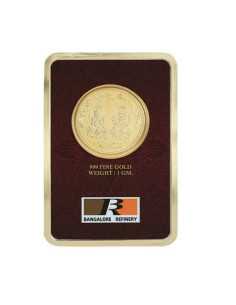Exclusive Deals & Trending Items


BRPL Bangalore Refinery Lakshmi Ganesh Gold Foil Coin Of 1 Grams in 24 Karat 999 Purity / Fineness
Shop Now

Muthoot Pappachan Swarnavarsham Gold Hallmarked Rose Coin of 2 gms in 22 KT 916 Purity Fineness
Shop NowInvesting can be complex, but knowing about gold imports is key. Recent data shows gold prices rose amid China-U.S. trade uncertainty and inflation worries. Spot gold went up 0.2% to $3,329.70 an ounce.
So, what does this mean for you? The rise in gold imports might signal it’s time to buy big. It shows a possible change in market trends and gold investment opportunities. By grasping the gold demand forecast, you can make better investment choices.
Key Takeaways
- Gold imports can signal future market trends and investment opportunities.
- Rising gold prices often indicate trade uncertainty and inflation worries.
- Understanding gold demand forecast can inform your investment decisions.
- Gold imports can be a key indicator for timing large buys.
- Staying informed about gold market trends is crucial for investors.
The Hidden Language of Gold Markets
The gold market is more than just a place to buy and sell. It’s a source of important investment signals. These signals can help you make smart choices or miss out on chances. By understanding the hidden language of gold markets, you can stay ahead.


How Market Signals Influence Investment Decisions
Market signals in the gold trade can greatly affect your investment choices. For example, the People’s Bank of China’s recent increase in gold reserves shows strong demand. This could mean a shift in global economic trends, affecting gold prices. By watching these signals, you can decide when to buy or sell gold wisely.
Why Traditional Indicators Sometimes Fail
Traditional indicators like supply and demand charts might not always show the whole story. They might miss out on geopolitical events, central bank actions, or changes in investor mood. For instance, a rise in gold imports might not show in short-term prices but could hint at future changes. By looking at global gold market analysis and gold trade statistics, you get a clearer view of the market.
To really understand the gold market, you need to keep up with the latest news and trends. This means watching gold price trends and seeing how they’re influenced by different factors. By doing this, you can take advantage of opportunities in the gold market.
Understanding Gold Imports as Economic Indicators
Gold imports give us clues about market mood and economic health. They are a big part of international trade. They show important changes in the global economy.


Gold imports are tied to market mood. They show how investors feel and their trust in the economy. When investors are optimistic, gold imports go up. This increases demand and prices.
The Relationship Between Imports and Market Sentiment
The link between gold imports and market mood is complex. More gold imports might mean less trust in other investments like stocks or real estate. But, they can also show a cultural or traditional love for gold.
- Gold imports rise when the economy is uncertain.
- Investor behavior drives gold demand.
- Cultural factors shape gold import trends.
Historical Correlation Between Import Volumes and Price Movements
There’s a clear link between gold import volumes and price changes. For example, China’s gold imports hit over 1,400 tonnes in 2023. This made it the top gold importer. The high demand pushed up global gold prices.
“The increase in gold imports is a clear indicator of market sentiment and economic health.”
Understanding this link is key for investors and policymakers. By looking at gold import data, we can see market trends. This helps us make smart choices.
As the world economy changes, watching gold imports is vital. Whether you’re an investor, policymaker, or just curious, keeping up with gold import trends offers a special view of the global economy.
India’s Unique Position in the Global Gold Market
India is the second-largest consumer of gold. Its cultural practices shape global gold demand. You might wonder how cultural practices affect gold demand. It’s because of India’s traditions and economic factors.
Cultural and Economic Factors Driving Gold Demand
Gold demand in India is driven by cultural factors like festivals and weddings. Gold is more than a metal; it’s a symbol of prosperity and good luck. Gold demand surges during these periods, affecting global prices.
Economic factors also play a big role. Gold is seen as a safe-haven asset during economic uncertainty. This perception boosts demand and affects global gold prices.
How Indian Buying Patterns Influence Global Prices
Indian buying patterns significantly impact global gold prices. The country’s demand is so large that it can change global prices. Let’s look at how this happens.
Festival Season Impacts
During festivals like Diwali, gold demand in India skyrockets. This surge can push global gold prices up.
Wedding Season Demand
The wedding season also sees a spike in gold demand. Gold jewelry is key in Indian weddings. This demand can significantly affect global gold prices.
| Period | Average Gold Demand (Tons) | Impact on Global Prices |
|---|---|---|
| Non-Festival Season | 400 | Moderate |
| Festival Season | 800 | High |
| Wedding Season | 1000 | Very High |
The table shows how India’s gold demand changes across periods. This affects global gold prices. Knowing these patterns helps in gold demand forecasts and gold investment opportunities.
“Gold is not just a commodity in India; it’s a cultural phenomenon that drives demand and influences global prices.”
Understanding India’s gold demand can help in making smart gold investments. Knowing the cultural and economic factors can help predict price movements. This way, you can spot gold investment opportunities.
The Gold Imports Phenomenon in India
India is a huge consumer of gold, showing us a lot about the global market. Gold is very important in Indian culture. It stands for wealth and is used in many traditional events and jewelry.
Historical Import Trends in the Indian Market
India’s gold import history has seen big ups and downs. These changes come from government rules, world prices, and how much people want to buy. Historically, India has been one of the largest importers of gold, showing how the country’s economy and people’s buying habits are doing.
When global prices are low and people want more gold, imports go up. But, if prices are high or there are rules on imports, less gold comes in.
How Domestic Consumption Affects Import Volumes
How much gold people in India buy affects how much gold comes into the country. Most of this demand comes from the jewelry industry. Many people buy gold for both decoration and as an investment.
Rural vs. Urban Demand Patterns
The way people in rural and urban areas buy gold is different. Rural areas tend to have a higher demand for gold jewelry, linked to farm income and rural prosperity. Urban areas, on the other hand, have more varied demand, with a big part being for investment, like gold coins and bars.
Knowing these differences helps us understand gold import trends in India better.
Decoding Gold Import Data: What the Numbers Really Mean
Gold import data is key to understanding market trends and investment chances. As you explore gold investments, knowing the details of import data is vital. It’s important to look beyond just the numbers to see their true meaning for your investments.
Key Metrics to Monitor
When looking at gold import data, focus on a few key metrics. These include the volume of imports, the countries involved, and when these imports happen. For example, China’s central bank has been adding gold to its reserves for 18 months. This has increased their total reserves to 72.8 million ounces.
Such data gives us valuable insights into global gold demand and market trends.
Seasonal Variations and Their Significance
Gold imports often change with the seasons, especially in countries like India. Cultural and religious festivals boost demand. Knowing these patterns helps predict market changes.
For instance, gold imports rise during wedding seasons and festivals like Diwali. Spotting these trends helps you make better investment choices.
Differentiating Between Investment and Consumption Imports
It’s crucial to tell apart gold imports for investment and those for personal use. Investment demand, like bars and coins, shows long-term market trends. On the other hand, demand for jewelry is tied to culture and economy.
By understanding these differences, you can grasp the real reasons behind gold import data. This helps you make smarter investment choices.
By keeping an eye on these gold import data aspects, you can get a deeper understanding of the global gold market. This knowledge helps you make more informed investment decisions.
The Predictive Power of Gold Imports
Gold imports are a key indicator of market trends. Yet, their predictive power is often missed. For investors, knowing how gold imports forecast prices can be very helpful.
Leading vs. Lagging Indicators
It’s important to know the difference between leading and lagging indicators. Leading indicators predict future trends, while lagging indicators confirm past ones. Gold imports can be a leading indicator if they hint at future price changes.
Recent data shows gold prices are going up. This is due to U.S.-China trade issues, inflation worries, and strong demand from China. Watching gold imports is key to predicting future price trends.
Case Studies: When Import Data Predicted Major Price Movements
There are many examples of gold import data predicting price changes. For example, a big jump in gold imports often means prices will go up. Here are a few key instances:
| Year | Gold Import Volume | Subsequent Price Movement |
|---|---|---|
| 2019 | High | +10% |
| 2020 | Moderate | +5% |
| 2021 | Low | -2% |
The table shows a clear link between gold import volumes and price changes. This proves the power of gold imports in predicting prices.
By studying gold import data, investors can make better choices. They can spot trends in the gold market and make the most of them.
How Central Banks Influence Gold Imports
Central banks are key players in the global financial scene. Their decisions on gold reserves can change gold import trends. They hold large amounts of gold, and their buying or selling can greatly affect the global gold market.
Reserve Management Strategies
Central banks manage their reserves to diversify and reduce risks. Increasing gold reserves is a common move. For example, the People’s Bank of China has been adding to its gold holdings.
This move away from the U.S. dollar can lead to more gold imports in countries with big gold reserves.
- Diversification of assets
- Risk mitigation
- Enhancing financial stability
Policy Changes and Their Market Impact
Policy changes by central banks can greatly affect gold imports. For example, increasing gold reserves can lead to more imports. On the other hand, reducing gold holdings can mean fewer imports.
These changes can also sway market sentiment. This can impact gold prices and how much is imported.
“The role of central banks in the gold market is multifaceted, involving not just the management of their own gold reserves but also influencing the broader market through their policy decisions.”
The Reserve Bank of India’s Gold Policies
The Reserve Bank of India (RBI) is key in managing India’s gold imports and reserves. The RBI’s gold import policies can greatly affect India’s gold trade statistics. By changing import duties or regulations, the RBI can shape the volume of gold imports and the gold market in India.
Keep an eye on the RBI’s policy changes and their effects on gold imports. This can help you make better decisions in the gold market.
Gold Import Regulations and Their Market Implications
Gold import rules greatly affect market trends, especially in India. Being the second-largest gold consumer, India’s policies can sway global gold prices. Knowing these rules is vital for smart investment choices.
India’s Evolving Import Policies
India’s gold import rules have changed a lot, due to trade balances and currency changes. The government has set up various controls, like duty changes and import limits. For example, India uses import duties to control its current account deficit.
These policy shifts deeply affect the gold market. Investors must keep up with these changes to spot new chances.
How Regulatory Changes Signal Market Shifts
Changes in gold import rules signal big market changes. For example, lowering import duties can increase demand and prices. But stricter rules can lower demand and prices.
Duty Adjustments
Duty changes are key in gold import rules. They can change the cost of gold imports, affecting demand and investor mood. For instance, lower duties can make gold cheaper, boosting demand.
Import Restriction Impacts
Import limits, like quotas or bans, deeply affect the gold market. They can limit supply, raising prices, or cut demand, lowering prices. It’s important for investors to understand these impacts to navigate the gold market.
By watching gold import rule changes, investors can spot market shifts. This helps them make better investment choices.
Top Gold Importing Countries and What Their Patterns Tell You
Knowing which countries import the most gold is key to understanding the global gold market. Looking at these countries’ import patterns can reveal a lot about market trends.
Beyond India: China, Switzerland, and Other Key Players
India is a big name in gold, but China and Switzerland are also very important. China leads with over 1,400 tonnes of gold imports in 2023. Switzerland is known for its gold refining skills.
Regional Trends and Their Global Significance
Gold import trends in different regions can affect the global market. For example, if Asian countries like China and India import more gold, it could push up global prices.
Competitive Analysis of Import Strategies
Each country has its own way of importing gold, based on its economy, culture, and investment choices. Studying these strategies can help predict the future of the global gold market.
| Country | Gold Imports (Tonnes) | Significance |
|---|---|---|
| China | 1,400 | Largest gold importer |
| India | 800 | Significant cultural demand |
| Switzerland | 300 | Major refining hub |
By looking at the gold import patterns of top countries, you can get a clearer picture of the global gold market. This knowledge can help you make smarter investment choices.
Connecting Gold Imports to Investment Timing
Gold imports are key for investors to time the market right. When you look at gold investment opportunities, knowing about gold imports is helpful. It gives you insights into market trends.
Optimal Entry Points Based on Import Trends
Looking at gold demand forecast through import data helps find the best times to invest. A big increase in gold imports means demand is high. This can lead to higher prices. Use this info to decide when to put your money in.
- Watch import volumes to see demand.
- Look at seasonal trends to predict price changes.
- Think about global economic factors that affect gold prices.
Warning Signs That Signal Potential Market Tops
It’s important to know when the market might peak. A big drop in gold imports, along with rising gold price trend signs, could mean a market top is coming. Be careful and think about changing your investment plan.
Creating a Timing Strategy for the Indian Market
To make a good timing strategy for India, you need to know what affects gold imports here. This includes cultural demand during festivals, economic conditions, and global trends. By understanding these, you can create a strong plan that takes advantage of gold investment opportunities.
By keeping up with gold imports and their impact on market trends, you can make better investment choices. Watch import data closely and adjust your plan as needed. This helps you deal with the gold market’s complexities.
Practical Tools for Tracking Gold Import Data
Tracking gold import data is key for investors wanting to profit from market trends. You need reliable and up-to-date information to stay ahead.
Government Resources and Reports
Government agencies are a goldmine for import data. In India, the Directorate General of Commercial Intelligence and Statistics (DGCI&S) publishes reports on gold imports. These reports give insights into volumes, values, and trends.
Commercial Services and Analytics Platforms
Commercial services and analytics platforms have advanced tools for tracking gold imports. Companies like Refinitiv and S&P Global offer detailed data solutions. They include real-time and historical gold import stats, plus analysis and forecasting tools for better investment decisions.
India-Specific Data Sources
For data specific to India, check out the Reserve Bank of India (RBI) and the Indian Bullion and Jewellers Association (IBJA). They update on gold import rules, market trends, and more.
Using these tools, you can keep up with gold import data. This helps you make smarter investment choices.
Building Your Gold Import Analysis Framework
Creating a personalized dashboard is the first step in building your gold import analysis framework. This dashboard will serve as your central hub for tracking gold import data and other relevant market signals.
Creating a Personal Dashboard
To create an effective dashboard, you’ll need to identify the key metrics that influence gold imports. These may include import volumes, global gold prices, and economic indicators. By tracking these metrics, you’ll be able to identify trends and patterns that can inform your investment decisions.
Key components of your dashboard:
- Import volume data
- Global gold price trends
- Economic indicators (e.g., inflation rates, currency fluctuations)
Integrating Import Data with Other Market Signals
To get a comprehensive view of the gold market, you’ll need to integrate import data with other market signals. This may include technical analysis indicators, market sentiment data, and macroeconomic trends. By combining these different data sources, you’ll be able to identify potential gold investment opportunities and make more informed decisions.
Adjusting for India’s Unique Market Factors
India’s gold market is influenced by a range of unique factors, including cultural and economic considerations. To build an effective analysis framework, you’ll need to take these factors into account. This may involve adjusting your dashboard to track seasonal fluctuations in demand, as well as changes in government policies or regulations that impact gold imports.
By building a robust gold import analysis framework, you’ll be better positioned to navigate the complexities of the gold market. You’ll be able to capitalize on emerging trends in gold demand forecast and gold price trend.
Common Mistakes When Interpreting Gold Import Signals
Gold import signals are key to understanding market trends. But, misreading them can lead to bad investment choices. It’s vital for investors to grasp these signals and steer clear of common errors to make smart decisions.
Correlation vs. Causation Pitfalls
Investors often mix up correlation and causation when looking at gold import data. For example, more gold imports might happen when gold prices go up. Yet, this doesn’t mean imports cause the price hike. It’s important to dig deeper and see what really drives both import levels and price changes.
To sidestep this trap, look at various data, like gold trade statistics and market trends. This way, you get a clearer picture of how different elements play out in the gold market.
Overlooking Contextual Factors
Context is crucial when reading gold import signals. Ignoring factors like gold import regulations, economic signs, and global events can lead to wrong conclusions. For instance, changes in import rules can greatly affect how much gold is imported, which then changes gold prices.
To get gold import data right, keep up with important contextual elements. This means watching for updates on gold demand forecast and grasping how worldwide economic shifts affect gold imports.
Misreading Seasonal Patterns in Indian Imports
India is a big gold consumer, and its import habits change with the seasons. Misunderstanding these patterns can lead to wrong market trend assumptions. For example, a spike in gold imports during a festival might seem like a demand boost. But, it could just be due to seasonal buying.
To avoid this error, know about the seasonal ups and downs in Indian gold imports. Adjust your analysis with this knowledge. This means understanding the cultural and economic reasons behind gold demand in India and using this insight for your investments.
Conclusion: Leveraging Gold Import Intelligence for Strategic Investments
Gold imports play a big role in the global gold market. By looking at import trends, you can spot good investment chances. The gold price changes because of many things, like how much is imported, what people think, and new rules.
To make the most of these trends, keep an eye on the global gold market. Watch import data, know about seasonal changes, and tell apart investment and use imports. This way, you can plan your moves in the Indian market well.
As an investor, using gold import data can help improve your portfolio. Keep track of important numbers and know about new rules. This helps you make smart choices that match the gold price trend. It helps you earn more and take less risk in the changing gold market.


















